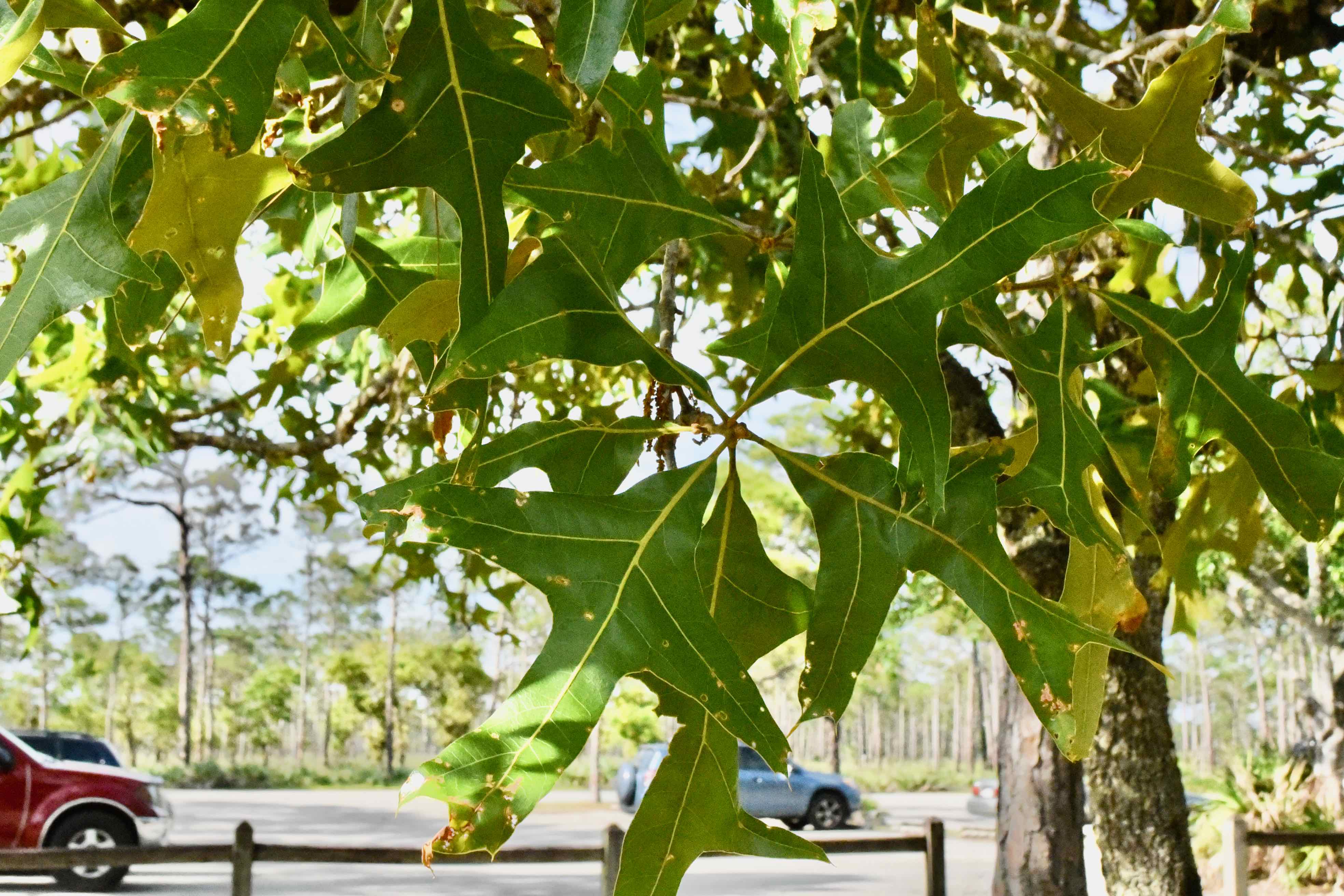
Turkey oak, photographed at Jonathan Dickinson State Park, Hobe Sound, Martin County, in April 2019.
Two things stand out about the turkey oak, Quercus Laevis: Its rarity in South Florida and its beautiful looks. It's one of the few trees in South Florida that puts on a fall foliage display that rivals anything that northern states have to offer.
Unfortunately, it's just not abundant here, and the Institute for Regional Conservation in Delray Beach considers it imperiled within the bounds of South Florida. It's only found in two state parks, one in Collier County, one in Martin, and that's it. On the other hand, drive north into the sandhills of Central and Northern Florida and it can be so numerous as to be weedy. Its range extends throughout the southeastern United States roughly from Virginia through Louisiana. Some sources include Texas in the mix.
Turkey oak gets its common name from its sharply pointed, three-lobed leaves that resemble a turkey foot. The leaves are also the inspiration for the scientific name, laevis, which is Latin meaning smooth, slippery or polished. Quercus is Latin for oak. It's sort of medium as oak trees go in the region, taller than scrub oaks, shorter than live oaks. Typically turkey oaks will range between 20 feet and 30 feet tall, but it can reach more than 60. According to the U.S. Forest Service, the tallest turkey oak in Florida is 82 feet. On the other hand, when growing in shade, it will be more shrub-like than tree in habit. It lives to about 70 years, while Virginia live oaks reach into the centuries.
Turkey oaks grow in barrens, sand hills and sand ridges of the Atlantic and Gulf coastal plains. At Jonathan Dickinson State Park, where the photographs on this page were taken, turkey oaks dot the pine flatwoods near the Loxahatchee River and nearby scrubs.
It has thick bark gray to black in color that is deeply furrowed, with rough, irregular ridges. The thick bark is one adaption that allows turkey oaks to survive fire. That's important, because they live in places that can burn as often as every four or five years. An intense fire will top-kill a turkey oak, but it will resprout from its root collar. As much as 85 percent of the tree's biomass is underground.
The leaves are simple, arranged alternately along branches and are hairless, accounting for that smooth feel. They are light green above, paler underneath, have three to seven lobes and prominent veining. The edges, or margins, are smooth.
Turkey oaks produce acorns every year but they require two years to mature. They're relatively heavy, and like the cliche says, they tend not to fall far from the tree. They're fodder for eastern gray squirrels and fox squirrels, who eat a few and stash a few away for a later meal. This helps to disperse the acorns, but again, they tend to remain close to the mother tree. The result is that turkey oaks tend to be rather concentrated than spread out widely.
Blue jays, scrub jays, woodpeckers and wild turkey (naturally) also eat the nuts. Turkey oaks also provide cover and shelter for wildlife. Fox squirrels will nest in the trees and use the leaves as nesting material. It's also important as a source of food for black bears and white-tailed deer. Horace's duskywing, red-banded hairstreak and white-m hairstreak use turkey oaks as host plants for their larvae.
Because of its relatively compact size, turkey oak is useful as a landscaping tree. It's also drought resistant and able to stand up to hurricane-force winds. It will attract wildlife to your yard. And of course, there's the gorgeous fall foliage, which persists well into winter. On the down side, it tends to produce a lot of wind-borne pollen, which can be a problem for those with allergies. And as noted earlier, it can be weedy.
The lumber isn't considered valuable for construction or woodworking, but it is used widely for barbecuing. It's also been used to tan leather.
Turkey oak is also known as turkey foot oak and scrub oak. It is a member of Fagaceae, the beech family. Also note, turkey oak is used as the common name for a tree found in Europe.
Jonathan Dickinson State Park



